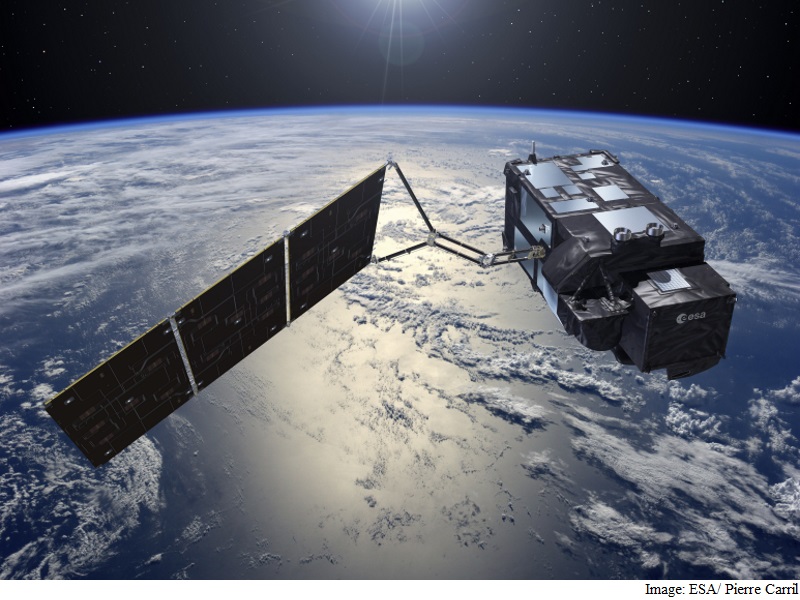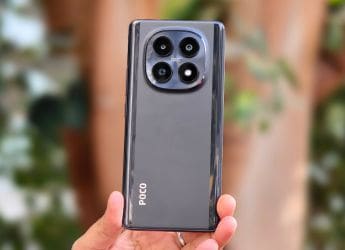- Home
- Science
- Science News
- Europe Launches Satellite to Help Track Global Warming
Europe Launches Satellite to Help Track Global Warming

The Sentinel-3A satellite, part of a system of satellites that is to monitor Earth, blasted off on board a Rockot launcher from the Plesetsk cosmodrome in Russia's north-western Arkhangelsk region at 12:57 p.m. EDT (1757 GMT) on Tuesday.
It headed for orbit 815 km (506 miles) above Earth, from where it will collect data on sea surface temperature and height that will contribute to more precise weather forecasts and help forecast the impact of rising temperatures.
"When we speak about global warming we often focus on rising air temperatures, but 90 percent of the energy put out on our planet ends up in the ocean," Volker Liebig, director of the European Space Agency's (ESA) Earth Observation programme, told Reuters ahead of the launch.
Data from Sentinel-3A, which is to work in tandem with another satellite to be sent up in mid-2017, could also help shipping companies chart more efficient routes and may be used to monitor forest fires and oil spills and to forecast crops.
The Copernicus project, for which the European Union and the European Space Agency (ESA) have committed funding of more than EUR 8 billion (roughly Rs. 61,662 crores) until 2020, is described by the ESA as the most ambitious Earth observation program to date.
The launch of the Copernicus project became especially urgent after Europe lost contact with its Earth observation satellite Envisat in 2012 after 10 years.
Images taken by Sentinel-3A are lower-resolution than those from the first two satellites that the ESA sent up for Copernicus Sentinel-1A and 2A but the 3A will cover a wider swathe of Earth.
It can deliver images of the whole planet within about two days, which will be cut to less than a day once its twin 3B joins it next year. That compares with around six days for the two Sentinel-1 and Sentinel-2 satellites, the ESA's Liebig said.
© Thomson Reuters 2016
Catch the latest from the Consumer Electronics Show on Gadgets 360, at our CES 2026 hub.
Related Stories
- Samsung Galaxy Unpacked 2025
- ChatGPT
- Redmi Note 14 Pro+
- iPhone 16
- Apple Vision Pro
- Oneplus 12
- OnePlus Nord CE 3 Lite 5G
- iPhone 13
- Xiaomi 14 Pro
- Oppo Find N3
- Tecno Spark Go (2023)
- Realme V30
- Best Phones Under 25000
- Samsung Galaxy S24 Series
- Cryptocurrency
- iQoo 12
- Samsung Galaxy S24 Ultra
- Giottus
- Samsung Galaxy Z Flip 5
- Apple 'Scary Fast'
- Housefull 5
- GoPro Hero 12 Black Review
- Invincible Season 2
- JioGlass
- HD Ready TV
- Laptop Under 50000
- Smartwatch Under 10000
- Latest Mobile Phones
- Compare Phones
- Vivo Y500i
- OnePlus Turbo 6V
- OnePlus Turbo 6
- Itel Zeno 20 Max
- OPPO Reno 15 Pro Mini 5G
- Poco M8 Pro 5G
- Motorola Signature
- Vivo Y50e 5G
- Lenovo Yoga Slim 7x (2025)
- Lenovo Yoga Slim 7a
- Realme Pad 3
- OPPO Pad Air 5
- Xiaomi Watch 5
- Huawei Watch 10th Anniversary Edition
- Acerpure Nitro Z Series 100-inch QLED TV
- Samsung 43 Inch LED Ultra HD (4K) Smart TV (UA43UE81AFULXL)
- Asus ROG Ally
- Nintendo Switch Lite
- Haier 1.6 Ton 5 Star Inverter Split AC (HSU19G-MZAID5BN-INV)
- Haier 1.6 Ton 5 Star Inverter Split AC (HSU19G-MZAIM5BN-INV)

















